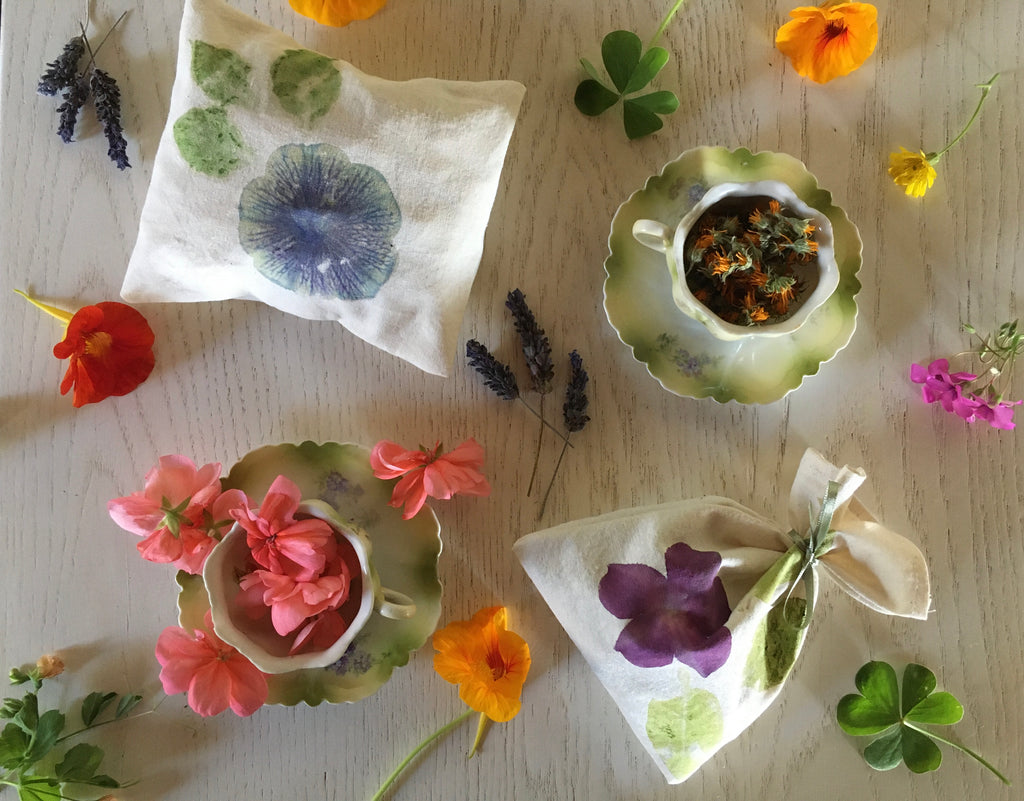There are 295 kinds of green, making it the most diverse colour in nature. Green is also the colour of the heart chakra, and is associated with life and vitality, the element of earth and a healthy planet.
Tomorrow, my friend Hasi and I will co-host an event dedicated to the intersection of colour and scent. We will demonstrate some of the techniques for extracting colour and fragrance from plants,,explore the concept of synesthesia, and how our personal history is intertwined with vines, and strewn with the healing beauty of leaves and flowers. In the photo is Grin perfume and a stunning rainbow of greens - flower- dyed fabrics by Hasia Naveh.
While green is a colour that is almost synonymous with nature, it is not as straightforward to achieve using natural dyes. Often what we'll get is either an olive green (i.e.: with plants that also contain tannins, such as pomegranate), or myriad uninspiring yellow-greens (from carrot, for instance). They tend to have a muted quality. Grassy green is usually achieved using weld (a very valuable type of yellow) layered over indigo.
The particular stunning, vivid range of green shades you see in the photo was achieved from a dyepot of scabiosa flowers, grown by Hagar Zachar, a natural dyer and flower horticulturalist from Alon HaGalil. The variety of shades is due to using different types of fabrics (i.e.: linen, cotton, silk) and also experimenting with either fresh or dried flowers. Another factor in natural dying, is when is the fabric dipped in the dyepot. Generally speaking the earlier dippings will absorb the brightest colours. The last additions to the pot, when the dye is much weaker, may achieve pastels. And of course the length of dipping time is also a factor.
Bonus: Hagar's presence and participation in our event is a pleasant surprise (an idea Hasi came up with last minute, and we were so fortunate that Hagar was able to say yes!). She will be showing us more flowers that are suitable for colour production, on either paper or fabric.
Grin perfume of course plays on the sound of "Green" and "Grin" - and who wouldn't smile if they're surrounded by luscious green plants, or more specifically, observing the first sprouts of green grass come autumn and the first rainshowers (if you're living in the dry parts of the world); or shoots of green from bulb plants in the spring (if you live in the parts of the world where the dead season is winter). Green as a symbol of new beginnings, and pretty optimistic at that.
The scent is made of various green-smelling and green-coloured fragrant botanicals: Galbanum, with it sharp, cut-grass and parsley personality; boronia, a delicate flower with beta ionone at its helm; violet leaf, with it green cucumber-like scent, watery and mysterious; green pepper (because it has a green colour, of course), green oakmoss, and vetiver root, which brings another shade of green that is both cool and earthy.









